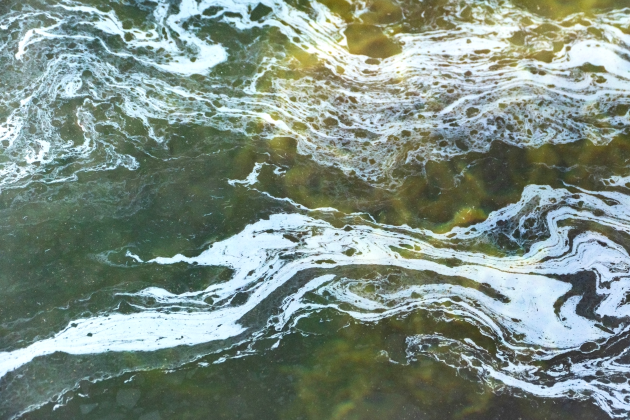Case with Severstal: Separation of spent coolant
p> How to separate a coolant with the highest possible concentration of petroleum products without heating to get 1% vol. of sludge, water with pH 7.6 and petroleum product content less than 1 mg/dm3.
Client
Severstal is Cherepovets Steel Mill, the second largest steel mill in Russia. The World Wildlife Fund ranks it among the ten most environmentally responsible mining and metallurgical companies in Russia. The plant complies with environmental regulations and constantly improves its waste management, reducing the amount of waste and carbon dioxide emissions.
Task
Decompose waste coolant in such a way as to:
-
Minimize the non-degradable residue that goes to disposal;
-
Purify the remaining water so that the concentration of petroleum products does not exceed 10 mg/dm3 and the pH value is in the 6.5-8.5 range;
-
Do not use the method of evaporation, which requires heating the emulsion to 85-95 ° C. It leads to high electricity costs and carbon dioxide emissions into the atmosphere - up to 2,500 tons per year.
Solution
Analysis and solution selection
When the Biomicrogels® laboratory began examining a sample of the plant's waste coolant, it became clear that it had a complicated composition. Every coolant has its own concentrate and its composition is a trade secret. That is why it is impossible to determine at a glance which reagents in what quantity will be able to separate this or that emulsion.
After laboratory tests the specialists selected a coagulant and determined the dosage that would meet the customer's requirements for the treated water.
BMG-P2 was used for the solution, because it is:
-
suitable for the treatment of persistent emulsions such as waste coolant;
-
environmentally friendly: it is based on vegetable raw materials. This coincides with the environmental strategy of the mill.
The last two numbers in the reagent name indicate the concentration of the solution. BMG-P202 is a 2% coagulant solution
In addition to the coagulant, three other chemicals are needed for emulsion cleaning - nitric acid, activator and soda ash.
This is how they are used in coolant treatment:
-
Water-oil emulsion is treated with acid to destabilize it and release some of the oil products it contains.
-
A working solution of coagulant and activator is injected. They bind the petroleum product particles in groups, which precipitate in a low soluble sediment
-
The sediment is separated by sedimentation and removed from the water.
-
A working solution of soda is added to the water, which corrects the pH to the desired value.
-
The purified and clarified water is filtered.
Unlike evaporation, this method of coolant separation does not require heating, which means no energy costs and no carbon dioxide pollution.
Testing
Next, the Biomicrogels® team had to figure out the exact dosage and find a suitable method to dispose of the sludge that is produced after the separation of the coolant. The less substance goes to landfill or pyrolysis, the better.
Experimental and industrial tests were held in real conditions - on the equipment of oil-emulsion section of the mill and at a working volume of incoming coolant from production - about 300 m3 per day.
Tests took place before the planned reconstruction of the MEO site equipment, so there were difficulties because of the obsolete equipment. For example, flotator and filters for water after-treatment were contaminated with oil products and not just did not purify water, but repeatedly polluted it. Reagent dosing pumps could not cope with the amount of used coolant, and reagent tanks were too small.
During tests, Biomicrogeli® specialists determined the quality of the waste fluid and selected effective reagent dosages.
To find out how to minimize the volume of residue after emulsion separation, the team tested three options for thickening it:
-
Tricanter dewatering without prior alkalinization - the pH value of the sludge did not change.
-
Leaching the sludge stream with a working solution of soda ash and feeding it to a tricanter.
-
Thickening by sedimentation and subsequent adjustment of water pH value with soda ash.
In the first variant, the flakes of sludge broke down under the action of centrifugal forces, did not settle down and went into the stream of fungate. Thickening the sludge in this way did not work. The second option was abandoned because the oil content in the used coolant was low. Use of the third option allowed to concentrate the sediment and reduce its share from 15-20% to 2-3% of the volume of processed coolant, so the team stopped at it.
After thickening by sedimentation it is possible to isolate up to 15 liters of oil products from 1 m3 of sediment.
Tricanter separates the resulting sludge into two phases of different densities — diluted Biomicrogels® coagulant solution and petroleum products
Result
Successful tests have shown that Biomicrogeli® Coagulant helps:
- Purify water to the desired degree. The petroleum product content was reduced from 2,500 mg/dm3 to 1.6-7.8 mg/dm3 and the pH value reached 7.6. The treated water with such indicators can be returned to the technological cycle instead of being discharged to the treatment facilities.
Experiments have shown that the concentration of petroleum products in treated water will be less than 1 mg/dm3, if the doses of coagulant and activator are increased by 10%.
-
Decomposition of coolant without heating. The process was running at a natural temperature of 22-27 ° C, so there was no electricity costs and CO2 emissions into the atmosphere.
-
Reduce the volume of waste. The chosen technology helps reduce the amount of sludge from 10 to 2% of the processed coolant and sends five times less waste for disposal.
Biomicrogels® also proposed a plan to upgrade the equipment in the oil-emulsion section. Its implementation would help to increase the capacity of the site from 300 to 800 m3 per day without compromising the quality of the treated water.




